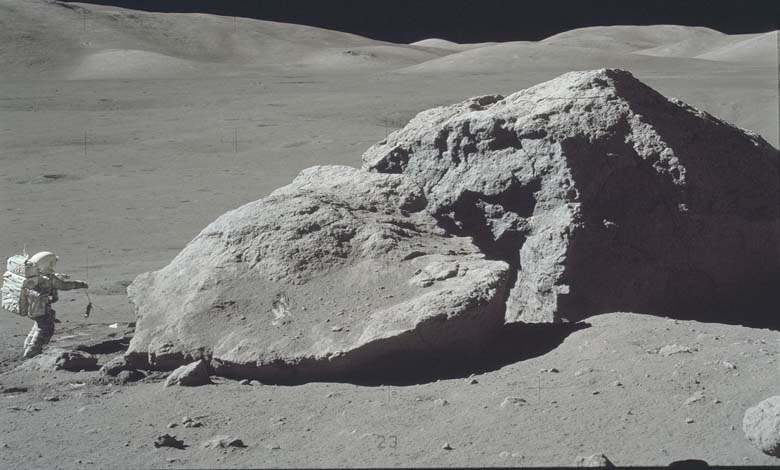Rocks from Apollo mission 50 years ago reveal a mistake in the moon’s age

During the Apollo 17 mission in 1972, the last time humans walked on the moon’s surface, American astronauts Harrison Schmitt and Eugene Cernan collected around 110.4 kilograms of soil and rock samples and brought them back to Earth for further study.
Half a century later, zircon mineral crystals found in a coarse-grained igneous rock collected by Schmitt are helping scientists gain a deeper understanding of the moon‘s formation and age, the closest celestial body to Earth.
Based on the crystal analyses, scientists have stated that the moon is about 40 million years older than previously believed, forming over 4.46 billion years ago, just around 110 million years after the solar system’s formation.
The primary hypothesis for the moon‘s formation is that during the early stages of the solar system, a Mars-sized body named Theia collided with Earth. The resulting debris, molten rocks in space, coalesced into a disc of debris orbiting Earth, forming the moon. However, pinpointing the exact timing of the moon‘s formation has been challenging.
The mineral crystals formed after the debris cooled and solidified. Researchers used a technique called ion probe analysis to determine the age of the oldest known solid materials that formed after the giant impact, which includes the zircon crystals found inside a type of rock called norite collected by Schmitt.
Philip Herke, a planetary scientist at the Field Museum in Chicago and a professor at the University of Chicago, and senior researchers in the study published in Geochemical Perspectives Letters, said, “I’m struck by the fact that this study was conducted on a sample collected and brought back to Earth 51 years ago. At that time, ion probe analysis had not yet been developed, and scientists couldn’t imagine the kinds of analyses we perform today.”
Planetary scientist Pedong Zhang of the University of California and a co-author of the study added, “It’s interesting that the oldest minerals found on Earth, Mars, and the moon are all zircon crystals, not diamonds.”
Herke further explained that “zircon is very tough and resilient, surviving rock weathering from atmospheric exposure.”
The 2021 study led by Zhang used a technique called ion probe analysis to measure the number of uranium and lead atoms in the crystals, calculating the age of the zircon based on the radioactive decay of uranium into lead over time.
The new study used atom probe tomography to confirm the absence of lead atom confusion, further validating the age of the crystals.
Herke said, “The giant impact that formed the moon was a catastrophic event for Earth and changed its rotation speed. Subsequently, the moon had an impact on the stability of Earth’s rotational axis and the slowing of its rotation.”
“The moon‘s formation date is important because only after that did Earth become a habitable planet.”












